
Damon Francis Knight was an American science fiction author, editor, and critic. He is the author of "To Serve Man", a 1950 short story adapted for The Twilight Zone. He was married to fellow writer Kate Wilhelm.
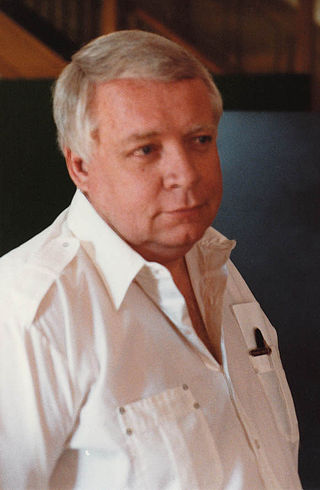
Algirdas Jonas "Algis" Budrys was a Lithuanian-American science fiction author, editor and critic. He was also known under the pen names Frank Mason, Alger Rome in collaboration with Jerome Bixby, John A. Sentry, William Scarff and Paul Janvier. In the 1990s he was the publisher and editor of the science fiction magazine Tomorrow Speculative Fiction.

Lester del Rey was an American science fiction author and editor. He was the author of many books in the juvenile Winston Science Fiction series, and the fantasy editor at Del Rey Books, the fantasy and science fiction imprint of Ballantine Books, subsequently Random House, working for his fourth wife Judy-Lynn del Rey’s imprint, Del Rey.
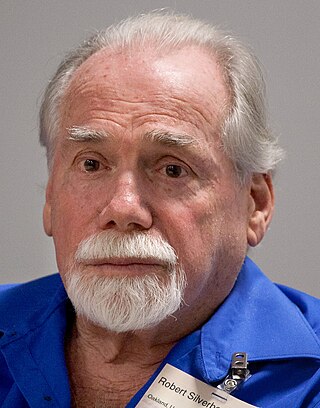
Robert Silverberg is a prolific American science fiction author and editor. He is a multiple winner of both Hugo and Nebula Awards, a member of the Science Fiction and Fantasy Hall of Fame, and a Grand Master of SF since 2004.
Alexei Panshin was an American writer and science fiction critic. He wrote several critical works and several novels, including the 1968 Nebula Award–winning novel Rite of Passage and, with his wife Cory Panshin, the 1990 Hugo Award–winning study of science fiction The World Beyond the Hill.

The Rest of the Robots is a collection of eight short stories and two full-length novels by American writer Isaac Asimov, published in 1964. The stories, centred on positronic robots, are all part of the Robot series, most of which take place in the Foundation universe. Another collection of short stories about robots, I, Robot, was re-published in the previous year, which is why Asimov chose to title the collection as The Rest of the Robots. None of the short stories in this collection were in I, Robot, however all of them were later included in The Complete Robot, and both novels about Elijah Baley were also published separately.
Jove Books, formerly known as Pyramid Books, is an American paperback and eBook publishing imprint, founded as an independent paperback house in 1949 by Almat Magazine Publishers. The company was sold to the Walter Reade Organization in the late 1960s. It was acquired in 1974 by Harcourt Brace which renamed it to Jove in 1977 and continued the line as an imprint. In 1979, they sold it to The Putnam Berkley Group, which is now part of the Penguin Group.

Infinity Science Fiction was an American science fiction magazine, edited by Larry T. Shaw, and published by Royal Publications. The first issue, which appeared in November 1955, included Arthur C. Clarke's "The Star", a story about a planet destroyed by a nova that turns out to have been the Star of Bethlehem; it won the Hugo Award for that year. Shaw obtained stories from some of the leading writers of the day, including Brian Aldiss, Isaac Asimov, and Robert Sheckley, but the material was of variable quality. In 1958 Irwin Stein, the owner of Royal Publications, decided to shut down Infinity; the last issue was dated November 1958.

The Einstein Intersection is a 1967 science fiction novel by Samuel R. Delany. The title is a reference to Einstein's Theory of Relativity connecting to Kurt Gödel's Constructible universe, which is an analogy to science meeting philosophy. The original publisher, Ace Books, changed Delany's originally intended title from A Fabulous, Formless Darkness for commercial reasons.

Science Fiction: The 100 Best Novels, An English-Language Selection, 1949–1984 is a nonfiction book by David Pringle, published by Xanadu in 1985 with a foreword by Michael Moorcock. Primarily, the book comprises 100 short essays on the selected works, covered in order of publication, without any ranking. It is considered an important critical summary of the science fiction field.

We Who Are About To... is a feminist science fiction novella by Joanna Russ. It first appeared in magazine form in the January 1976 and February 1976 issues of Galaxy Science Fiction and was first published in book form by Dell Publishing in July 1977.
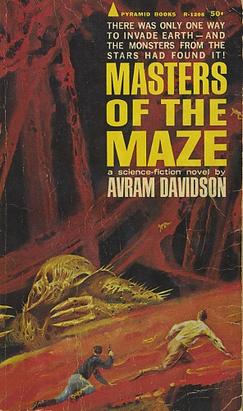
Masters of the Maze is a science fiction novel by American writer Avram Davidson, originally published in 1965 by Pyramid Books with a cover by John Schoenherr. The first UK edition, the only hardcover to date, was issued by White Lion in 1974. An American paperback reprint followed from Manor Books in 1976. Ebook editions appeared in 2012, from both Prologue Books and SF Gateway.
ME: A Novel of Self-Discovery is a novel written by science fiction author Thomas T. Thomas. It was published in 1991 by Baen Books.

Empire is a 1978 graphic novel written by Samuel R. Delany and illustrated by Howard Chaykin.

Nebula Award Stories Seventeen is an anthology of award winning science fiction short works edited by Joe Haldeman. It was first published in hardcover by Holt, Rinehart and Winston in August 1983; a paperback edition was issued by Ace Books in June 1985 under the variant title Nebula Award Stories 17.
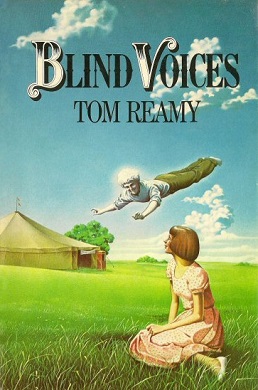
Blind Voices is a 1978 science fiction novel by Tom Reamy. Reamy's only novel, it was published "posthumously in a complete but not final draft" by Berkley Books.

The Nemesis of Evil is a science fiction novel by American writer Lin Carter, the first in his "Zarkon, Lord of the Unknown" series. It was first published in hardcover by Doubleday in 1975, with a paperback edition following from Popular Library in March 1978. It was reissued by Wildside Press in 1999. An ebook edition was issued by Thunderchild Publishing in August 2017.

The Best of Edmond Hamilton is a collection of science fiction short stories by American author Edmond Hamilton, edited by his wife and fellow science fiction writer Leigh Brackett. It was first published in hardback by Nelson Doubleday in April 1977 and in paperback by Ballantine Books in August of the same year as a volume in its Classic Library of Science Fiction. The book was reissued in trade paperback and ebook editions by Phoenix Pick in November 2010. It has also been translated into German.

The Best of Leigh Brackett is a collection of science fiction short stories by American author Leigh Brackett, edited by Edmond Hamilton. It was first published in hardcover by Nelson Doubleday in July 1977 and in paperback by Ballantine Books in September of the same year as a volume in its Classic Library of Science Fiction. A second hardcover edition was issued by Garland Publishing in March 1983, and Del Rey/Ballantine reprinted the paperback edition in June 1986. The book has been translated into German.
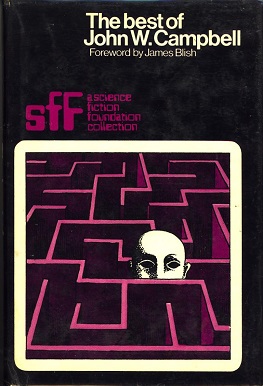
The Best of John W. Campbell is the title of two collections of science fiction short stories by American author John W. Campbell. The first, a British edition edited by George Hay, was first published in hardcover by Sidgwick & Jackson in February 1973, and in paperback by Sphere Books in November 1976. Sidgwick & Jackson later gathered together with The Far-Out Worlds of A. E. van Vogt (1968) into the omnibus volume Science Fiction Special 15 (1975), and with Brian N. Ball's Singularity Station (1973) and Poul Anderson's Orbit Unlimited (1961) into the omnibus volume Science Fiction Special 20 (1977). The second collection of this title, an American edition edited by Lester del Rey, was first published in hardcover by Nelson Doubleday in May 1976, and in paperback by Ballantine Books in June 1976 as a volume in its Classic Library of Science Fiction. The American edition was reprinted by Del Rey/Ballantine in February 1995, and has also been translated into German.
















